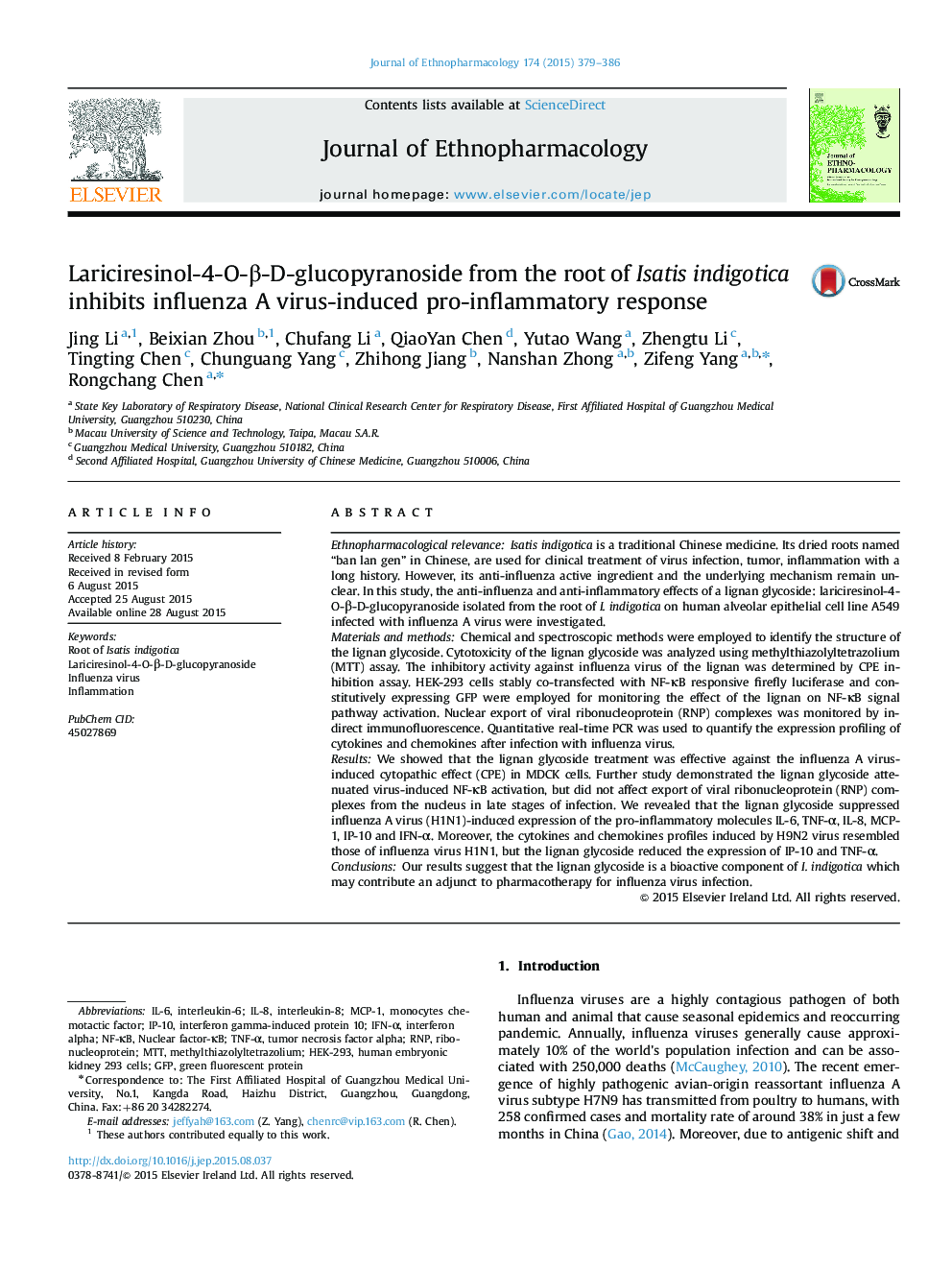| کد مقاله | کد نشریه | سال انتشار | مقاله انگلیسی | نسخه تمام متن |
|---|---|---|---|---|
| 5834755 | 1560388 | 2015 | 8 صفحه PDF | دانلود رایگان |

Ethnopharmacological relevanceIsatis indigotica is a traditional Chinese medicine. Its dried roots named “ban lan gen” in Chinese, are used for clinical treatment of virus infection, tumor, inflammation with a long history. However, its anti-influenza active ingredient and the underlying mechanism remain unclear. In this study, the anti-influenza and anti-inflammatory effects of a lignan glycoside: lariciresinol-4-O-β-D-glucopyranoside isolated from the root of I. indigotica on human alveolar epithelial cell line A549 infected with influenza A virus were investigated.Materials and methodsChemical and spectroscopic methods were employed to identify the structure of the lignan glycoside. Cytotoxicity of the lignan glycoside was analyzed using methylthiazolyltetrazolium (MTT) assay. The inhibitory activity against influenza virus of the lignan was determined by CPE inhibition assay. HEK-293 cells stably co-transfected with NF-κB responsive firefly luciferase and constitutively expressing GFP were employed for monitoring the effect of the lignan on NF-κB signal pathway activation. Nuclear export of viral ribonucleoprotein (RNP) complexes was monitored by indirect immunofluorescence. Quantitative real-time PCR was used to quantify the expression profiling of cytokines and chemokines after infection with influenza virus.ResultsWe showed that the lignan glycoside treatment was effective against the influenza A virus-induced cytopathic effect (CPE) in MDCK cells. Further study demonstrated the lignan glycoside attenuated virus-induced NF-κB activation, but did not affect export of viral ribonucleoprotein (RNP) complexes from the nucleus in late stages of infection. We revealed that the lignan glycoside suppressed influenza A virus (H1N1)-induced expression of the pro-inflammatory molecules IL-6, TNF-α, IL-8, MCP-1, IP-10 and IFN-α. Moreover, the cytokines and chemokines profiles induced by H9N2 virus resembled those of influenza virus H1N1, but the lignan glycoside reduced the expression of IP-10 and TNF-α.ConclusionsOur results suggest that the lignan glycoside is a bioactive component of I. indigotica which may contribute an adjunct to pharmacotherapy for influenza virus infection.
Graphical abstarct129
Journal: Journal of Ethnopharmacology - Volume 174, 4 November 2015, Pages 379-386